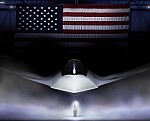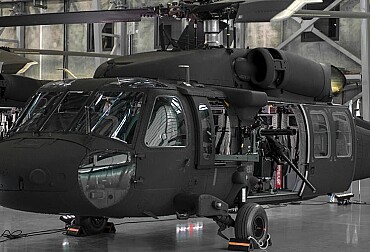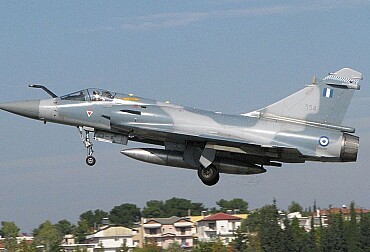GCAP – UK joins with Japan and Italy to develop a fifth generation stealth aircraft
The UK, Japan and Italy signed a treaty in Tokyo on 13 December to bring together their joint development project to create an innovative stealth fighter. The aim of the agreement is to strengthen their defence ties in the face of the growing threat from China. The project, known as the Global Combat Air Programme (GCAP), aims to develop a supersonic jet, with entry into service scheduled for 2035. The programme will be headquartered in the UK and will initially be led by a Japanese national.
The Global Combat Air Programme (GCAP), launched in December 2022, aims to jointly develop a next-generation fighter aircraft by 2035, in response to growing security threats from China and Russia. This ambitious project is the result of collaboration between the UK, Italy and Japan, three nations keen to strengthen their defence capabilities. In August 2023 Saudi Arabia expressed its wish to join the GCAP as a full partner. However, this request has created tensions within the alliance. While the UK and Italy were open to the idea, Japan was firmly opposed. Tokyo feared that Saudi membership would further delay the already tight timetable for the project. The countries involved aim to develop the aircraft in about half the time it took to build the Eurofighter Typhoon, using advanced manufacturing methods and digital tools.
As explained in a press release issued by the British government, the three signatory countries want to improve their supersonic capability and enhance prosperity as well as their geostrategic advantages. This fighter aircraft, known as Tempest in the UK, is the result of a merger of several European Tempest projects and the Japanese F-X project. The US agency Bloomberg also pointed out that this agreement comes two years after Japan and the UK agreed to pool their cutting-edge technologies to create a new-generation aircraft.
Leonardo (Italy), Mitsubishi Heavy Industries (Japan) and BAE Systems (UK) – have warmly welcomed the signing of the Convention on the Establishment of the Global Combat Air Programme – GCAP International Government Organisation (the GIGO) #military https://t.co/UPkiDyoSxn
— Military Leak (@militaryleakcom) December 26, 2023
In the UK, the effort will be led by BAE Systems, in close partnership with Rolls-Royce, Leonardo UK and MBDA UK, as well as hundreds of supply chain companies across the country. Japanese and Italian companies will also be involved. In the field of combat aviation, the UK Ministry of Defence has spent £2 billion over the last five years on technology, skills and capability development - with a further £600 million coming from industry - to ensure the UK is ready to take this programme forward.
In fact, the British government considers that this future aircraft should become one of the most advanced, interoperable, adaptable and connected fighter aircraft in service in the world. And with good reason: the new programme will create an unmanned aircraft equipped with advanced sensors and state-of-the-art weapons. "The supersonic stealth aircraft will be equipped with a powerful radar capable of providing 10,000 times more data than current systems, giving it a decisive advantage", the report goes on to say.
For Japan, this new project has almost symbolic significance. Indeed, this is the first time since the Second World War that the country has turned to countries other than the United States for a major military project. "At a time when we are facing the most complex security environment since the Second World War, ensuring air superiority remains a crucial challenge that we must meet," said Japanese Defence Minister Minoru Kihara. On the continental side of Europe, the FACS/SCAF project (Future Air Combat System or Système de Combat Aérien du Future in French), centred around a Franco-German core and involving Airbus, Thales, Safran and Dassault in particular, now seems to be making good progress.
A crucial programme for the future of stability in the Euro Atlantic, Indo-Pacific and wider global security, GCAP is a strong example of the UK’s global leadership in developing next generation military capability to deter and defeat threats to the UK and our allies. It is another demonstration of our commitment to Indo-Pacific security, following the deployment of the Royal Navy’s Carrier Strike Group in 2021, with a further deployment coming in 2025, as well as the Navy maintaining a persistent presence in the region through HMS Spey and HMS Tamar.
Separately, a new joint business construct will be headquartered in the UK, with significant global presence. This industry counterpart of the Government organisation will oversee support and timely delivery of the programme, including the 2035 in-service date of the combat aircraft – known as Tempest in the UK. The first leader of the joint business construct will be from Italy. This collaborative approach is indicative of the ground-breaking international programme.
GCAP will attract investment in research and development into digital design and advanced manufacture processes, providing opportunities for our next generation of highly skilled engineers and technicians,“ concludes the press release.
The project partners are committed to meeting the tight deadlines for developing a next-generation fighter aircraft to meet growing security threats. While challenges remain in terms of the potential enlargement of the alliance, the future of the project looks promising with a continued commitment to achieving the ambitious goals set.








